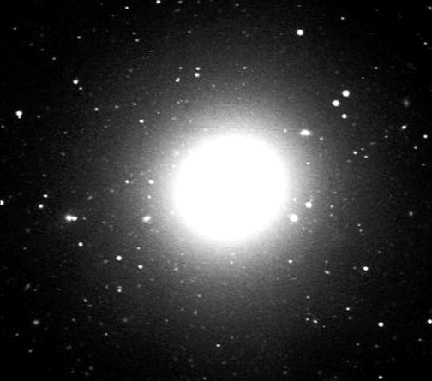|
In the central region of galaxies, stars are packed in very tightly as they orbit the core. For example, if our solar system was located in the central region of the Milky Way, our night sky would be 90,000 brighter than it is out here on the rim where we live. Yet even these packed-in stars are so far away from us that they can't be picked out individually--all together they look like fluffy fuzz. So when we send the light of these packed-in stars through a prism, their spectra add together. So a spectrum of this starlight is a measure of the group speed of stars. When measured at different distances around a galaxy's core, we learn how the speed of these stars changes with distance from the center. By measuring the orbital speed of stars we are essentially weighing the mass inside their orbit around the center. This is how we weigh the sun, too. HST measured the velocity of stars inside the rectangle, centered on the core of M84. |
|
|



